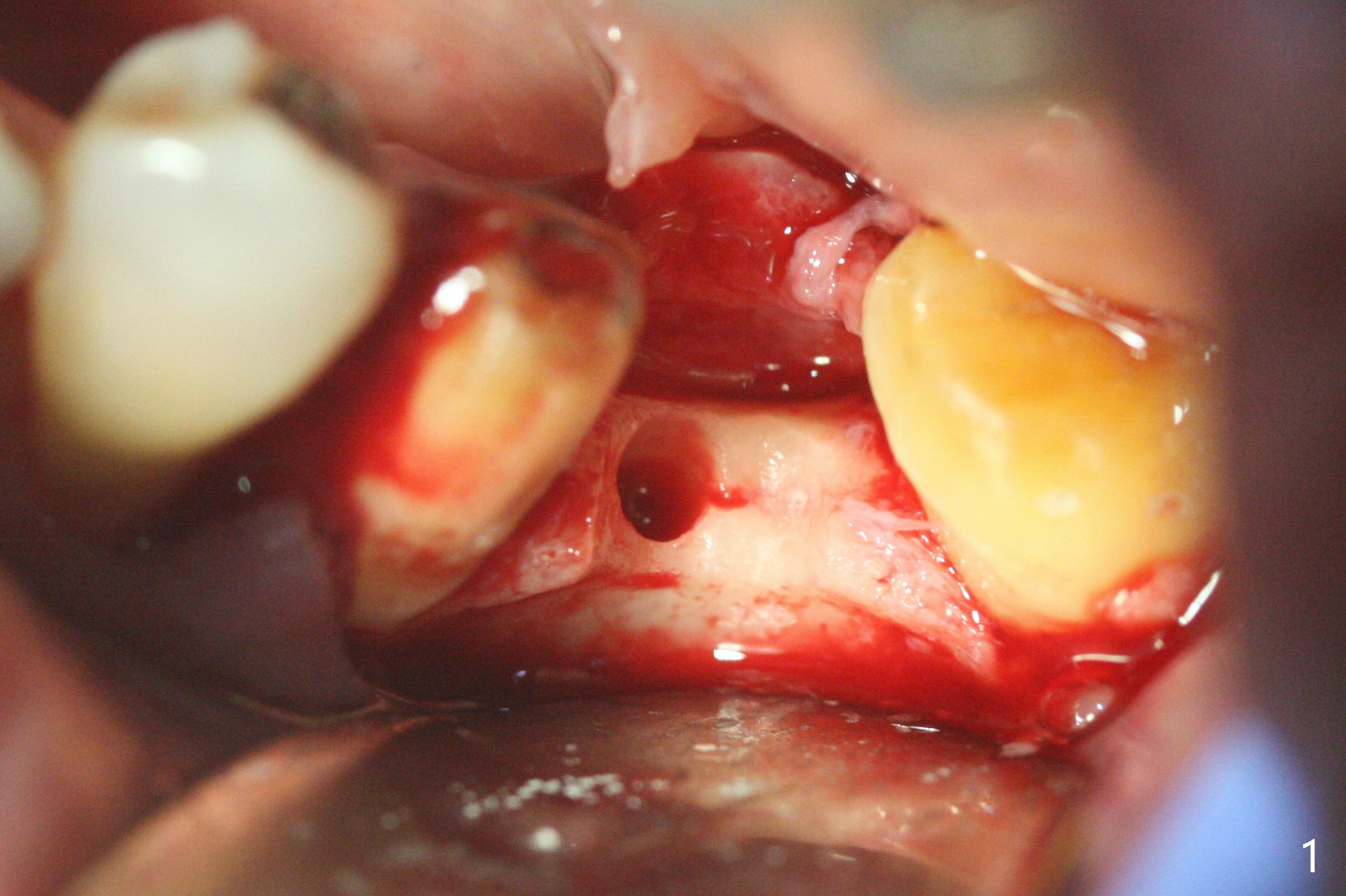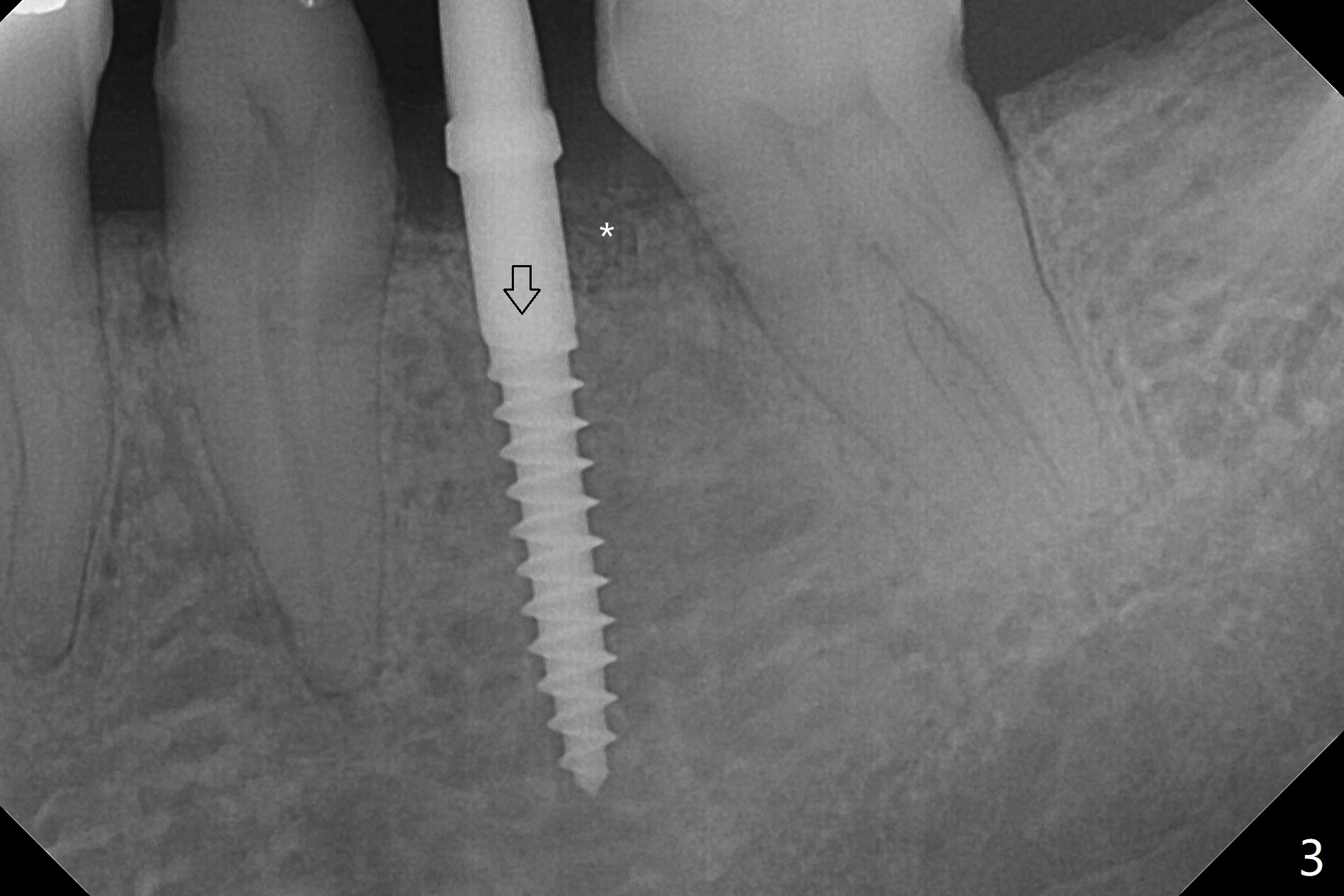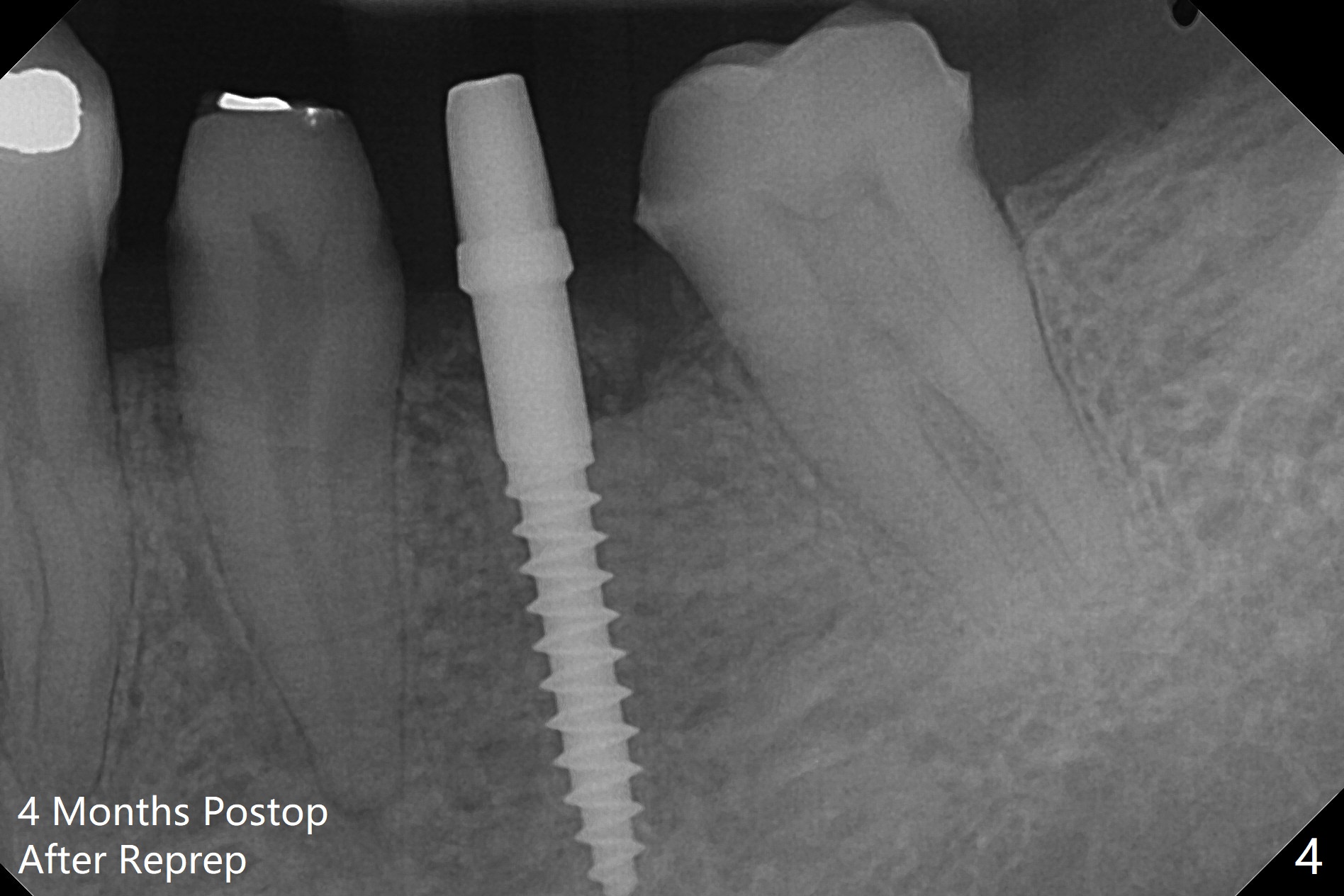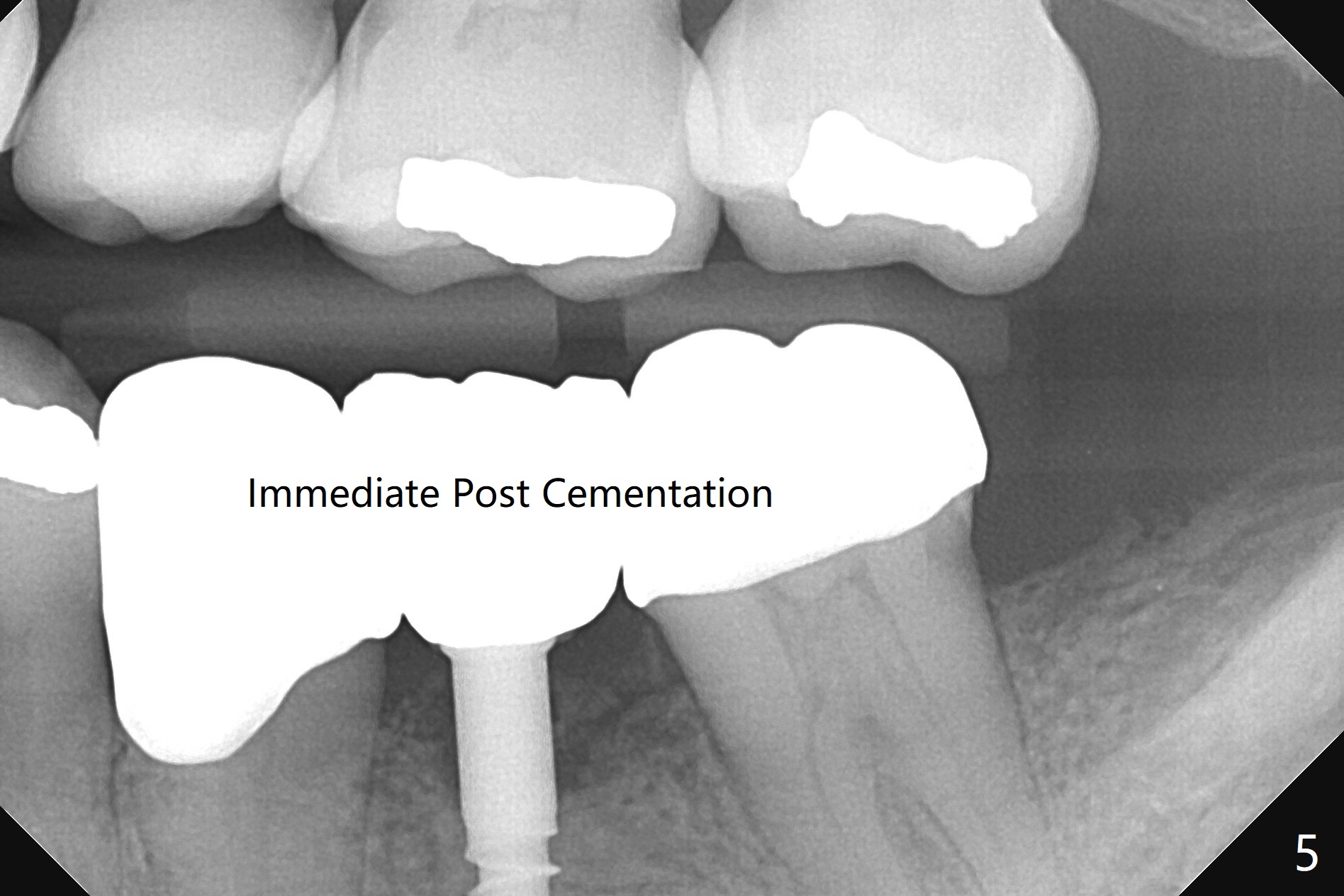
.jpg)



 |
.jpg) |
|
 |
 |
 |
Improvements of Narrow Guide Kit: Trimmer and 2.2x7.3 mm Drill M
To start osteotomy in the narrow ridge with the oblique top, the latter needs to be trimmed at #19. It would be less traumatic to have a narrow bone trimmer (e.g., 3 mm) in the Narrow Guide Kit. This case is originally designed to have ridge split. The ridge top is trimmed with surgical handpiece after incision. Following pointed drill, the cylindrical part of the 2.2x8.5 mm drill cannot engage to the metal sleeve with 10.5 mm offset. The guide has to be removed. The first 1-2 mm osteotomy has to be done free hand before reuse of the guide and the drill. Nevertheless, the osteotomy is precise buccolingual when it is finished (Fig.1). If the short drill (2.2x7.3 mm) cannot be produced, the next case should have 12 mm offset for narrow guide and an additional guide with regular metal sleeve for tissue punch and bone trimmer. Since the mesiodistal space is also limited, a 2.5x12(4) mm 1-piece implant is placed instead (Fig.2). With the implant placed a little deeper (Fig.3 arrow), bone graft is placed (*), followed by suture. When the procedure is done, the patient is tired. It would be nice to have a more complete Narrow Guide Kit with its own bone trimmer and 2.2x7.3 mm drill. There is no bone loss with retention of bone graft 4 months postop; after reprep of the neighboring teeth, impression is taken (Fig.4). The three crowns are cemented 4.5 months postop (Fig.5).
Return to Lower Molar Immediate Implant, Trajectory II Xin Wei, DDS, PhD, MS 1st edition 09/10/2019, last revision 02/06/2020